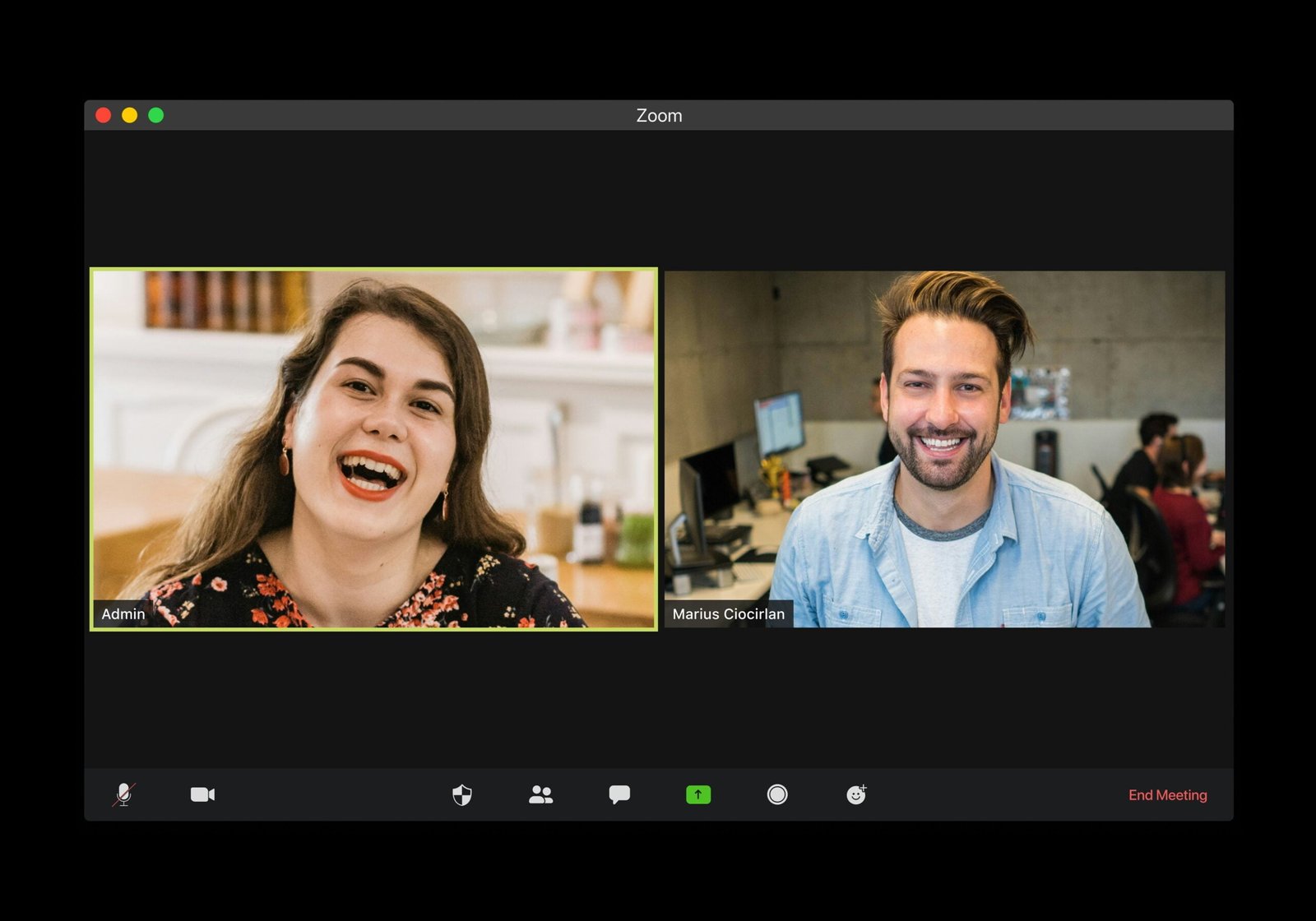As the world continues to embrace remote work, virtual interviews and video conferencing have become the norm for hiring processes. Whether you’re a seasoned professional or a recent graduate, acing a virtual interview requires a combination of preparation and the right tech setup. In this guide, we’ll explore some valuable tips and essential tech setup to help you excel in your next remote job interview.
Understanding the Virtual Interview Landscape
Virtual interviews, also known as remote interviews, are conducted using video conferencing platforms such as Zoom, Skype, Microsoft Teams, or Google Meet. These platforms allow candidates and interviewers to connect from anywhere in the world, eliminating the need for face-to-face interactions.
While virtual interviews offer convenience, they also present unique challenges. Technical issues, distractions, and the lack of physical presence can impact the overall interview experience. Therefore, it’s crucial to approach virtual interviews with a strategic mindset and the right technological tools.
Essential Tech Setup for Virtual Interviews
Before delving into the tips for mastering a remote job interview, let’s first ensure that you have the essential tech setup in place. Here are the key components:
1. Reliable Internet Connection
A stable internet connection is the backbone of a successful virtual interview. Ensure that you have access to high-speed internet to avoid lags or disruptions during the interview. If possible, connect to the internet via an Ethernet cable for a more reliable connection.
2. Quality Webcam and Microphone
Invest in a good quality webcam and microphone to ensure clear audio and video transmission. Built-in laptop webcams and microphones may suffice, but for optimal quality, consider using external devices for better clarity and sound.
3. Adequate Lighting and Background
Choose a well-lit area for your virtual interview, preferably with natural light. Ensure that your background is tidy and professional, free from any distractions. Consider using a virtual background if your physical space is not conducive to a professional setting.
4. Updated Software and Apps
Make sure that the video conferencing software or app you’ll be using is up to date. Check for any available updates and run a test call to familiarize yourself with the interface and features.
5. Headphones or Earphones
Using headphones or earphones can help minimize external noise and provide better audio clarity, creating a more focused and professional communication environment.
Tips for Mastering the Virtual Interview
Now that you have the necessary tech setup, let’s explore some valuable tips to help you excel in your virtual interview:
1. Test Your Tech Setup in Advance
Prior to the interview, conduct a test call with a friend or family member to ensure that your internet connection, webcam, microphone, and software are all functioning properly. This will help you identify and address any potential issues ahead of time.
2. Dress Professionally
Although you may be interviewing from the comfort of your home, dressing professionally can positively impact your mindset and demeanor during the interview. Opt for solid, neutral colors and avoid busy patterns that may be distracting on camera.
3. Minimize Distractions
Find a quiet and secluded space for your interview to minimize background noise and interruptions. Inform household members or roommates about the interview schedule to avoid any unexpected disturbances.
4. Maintain Eye Contact
During the interview, make an effort to maintain eye contact by looking directly into the camera rather than at the screen. This creates a sense of connection and engagement with the interviewer, despite the virtual setting.
5. Prepare Your Environment
Have a copy of your resume, a notepad, and a pen within reach for quick reference. Familiarize yourself with the company and role you’re interviewing for, and prepare thoughtful questions to ask the interviewer.
6. Practice Active Listening
Listen attentively to the interviewer’s questions and avoid interrupting. Take brief pauses before responding to ensure that the interviewer has finished speaking, and provide clear and concise answers.
7. Showcase Your Communication Skills
Communicate clearly and confidently, and be mindful of your tone and pace. Virtual interviews may have slight audio delays, so speaking at a moderate pace can enhance clarity and understanding.
8. Follow Up with a Thank-You Email
After the interview, send a personalized thank-you email to express your gratitude for the opportunity. Reiterate your interest in the position and briefly mention key points discussed during the interview.
Embracing Remote Hiring and Virtual Collaboration
As organizations adapt to remote work environments, the use of video conferencing for interviews is likely to become more prevalent. By mastering the art of virtual interviews and leveraging the right tech setup, you can confidently navigate the remote hiring process and showcase your qualifications effectively.
Remember, preparation and a positive attitude are key to excelling in virtual interviews. With the tips and tech setup outlined in this guide, you’re well-equipped to make a lasting impression in your next remote job interview.
Establishing a Professional Presence
In a traditional in-person interview, your physical presence and body language play a crucial role in creating a positive impression. Although the virtual setting may limit some of these non-verbal cues, you can still establish a professional presence during your remote interview.
1. Maintain a Confident Posture
Sit up straight, keep your shoulders back, and avoid slouching or fidgeting. This will not only make you appear more confident but also help you feel more self-assured during the interview.
2. Smile and Nod Occasionally
Smiling and nodding can convey engagement, interest, and a positive attitude, even through a screen. However, be mindful not to overdo it, as it may come across as unnatural.
3. Avoid Distracting Habits
Refrain from habits like playing with your hair, tapping your fingers, or shifting your gaze, as these can be magnified on camera and distract the interviewer.
4. Speak with Clarity and Confidence
Enunciate your words clearly and project your voice, ensuring that your responses are easy to understand. Speak with confidence, but avoid interrupting the interviewer or dominating the conversation.
Preparing for Common Virtual Interview Questions
While the overall interview process may be similar to in-person interviews, virtual interviews may include some unique questions. Preparing for these questions can help you feel more confident and ready to showcase your skills and experience.
1. Technical Difficulties and Troubleshooting
Interviewers may ask about your experience with virtual communication tools or how you would handle technical difficulties during the interview. Be prepared to discuss your familiarity with video conferencing platforms and your ability to troubleshoot any technical issues that may arise.
2. Remote Work Capabilities
Employers may inquire about your experience working remotely, your ability to collaborate effectively, and your strategies for staying productive and engaged in a remote environment.
3. Adaptability and Flexibility
Virtual interviews may require you to adapt to unexpected situations, such as unexpected background noise or interruptions. Demonstrate your ability to remain calm, focused, and flexible in the face of these challenges.
4. Effective Communication Skills
Interviewers may assess your communication skills, particularly your ability to convey your thoughts and ideas clearly and concisely through a virtual medium. Practice active listening and be prepared to provide detailed, well-structured responses.
Navigating the Virtual Interview Experience
Participating in a virtual interview can be a unique experience, but with the right strategies, you can navigate it with confidence and success.
1. Familiarize Yourself with the Platform
Prior to the interview, take the time to explore the features and functionalities of the video conferencing platform you’ll be using. Become comfortable with features like screen sharing, virtual backgrounds, and managing your audio and video settings.
2. Embrace the Virtual Format
Approach the virtual interview as an opportunity to showcase your adaptability and technological savvy. Embrace the virtual format as a chance to demonstrate your ability to thrive in a remote work environment.
3. Maintain Engagement and Energy
Virtual interviews can sometimes feel impersonal, but it’s important to maintain a high level of engagement and energy throughout the conversation. Use hand gestures, lean in towards the camera, and avoid distractions to keep the interviewer’s attention.
4. Seek Clarification if Needed
If you’re unsure about a question or need clarification, don’t hesitate to ask. Virtual interviews can occasionally experience audio or video issues, so it’s better to seek clarification than to provide an irrelevant or incomplete response.
5. Wrap Up with a Strong Conclusion
As the interview draws to a close, summarize your key strengths and express your continued interest in the role. Thank the interviewer for their time and reiterate your enthusiasm for the opportunity.
Leveraging Post-Interview Follow-Up
The interview process doesn’t end when the virtual session concludes. Follow-up and post-interview actions can make a lasting impression and increase your chances of moving forward in the hiring process.
1. Send a Timely Thank-You Note
As mentioned earlier, sending a personalized thank-you note or email within 24 hours of the interview is a courteous and professional gesture. This allows you to reiterate your interest, highlight key points discussed, and express your gratitude for the opportunity.
2. Follow Up on Next Steps
If the interviewer provided any information about the next steps in the hiring process, use the thank-you note to politely inquire about the timeline or any additional information you might need to provide.
3. Reflect on Your Performance
After the interview, take some time to reflect on your performance. Consider what went well, what you could have done differently, and how you can improve for future interviews. This self-assessment can help you refine your approach and identify areas for growth.
4. Stay Engaged and Responsive
If the company reaches out with additional questions or requests, respond promptly and enthusiastically. This demonstrates your continued interest and commitment to the process.
5. Maintain a Positive Attitude
Regardless of the outcome, maintain a positive attitude and avoid dwelling on any perceived shortcomings. Each interview is an opportunity to learn and improve, and a rejection can often lead to a better-suited opportunity down the line.
Conclusion: Embracing the Virtual Interview Advantage
In today’s evolving job market, virtual interviews have become the new norm. By embracing the unique challenges and opportunities presented by this format, you can position yourself as a well-prepared, tech-savvy, and adaptable candidate. Remember, the virtual interview is not just a test of your technical skills but also a chance to showcase your communication abilities, problem-solving skills, and overall fit for the role.
With the right tech setup, a well-thought-out approach, and a positive attitude, you can excel in your next remote job interview and take a significant step towards your dream career. Good luck!



